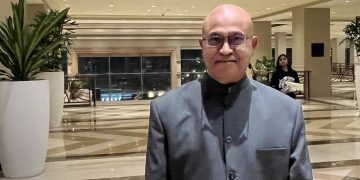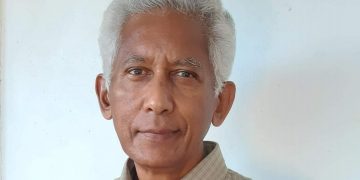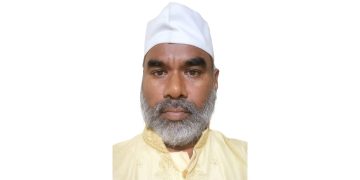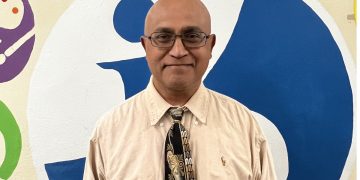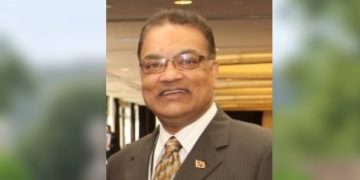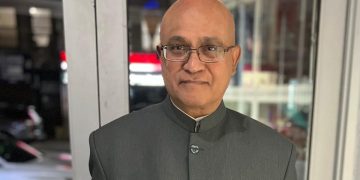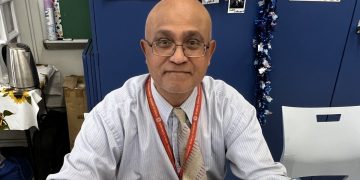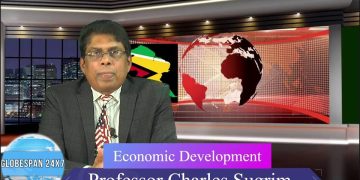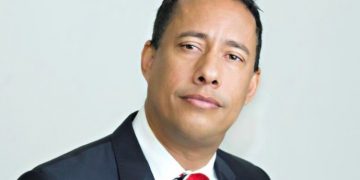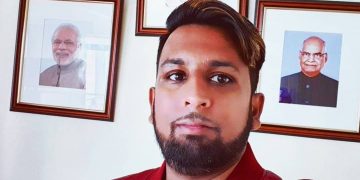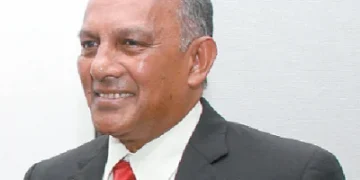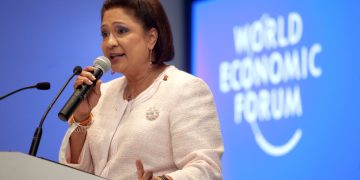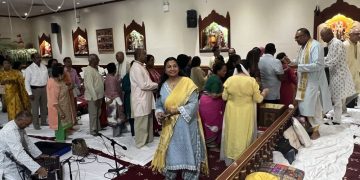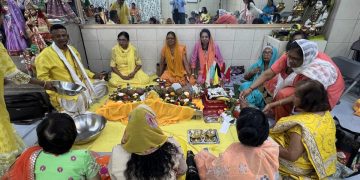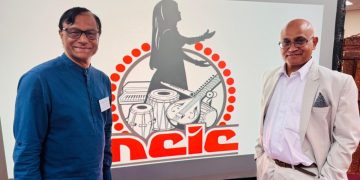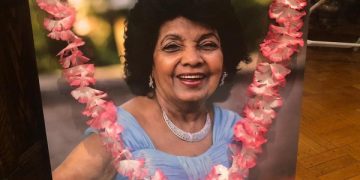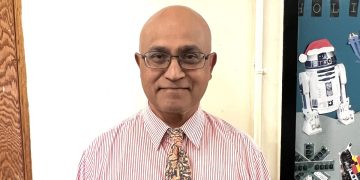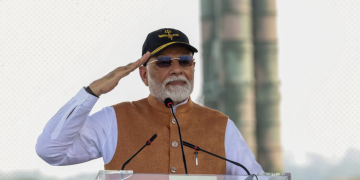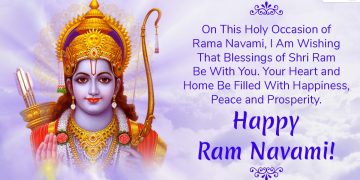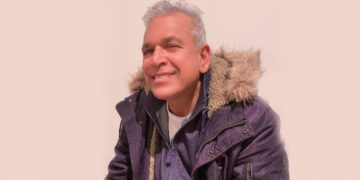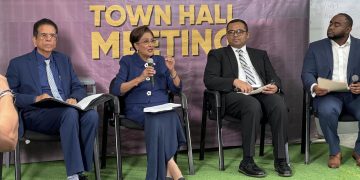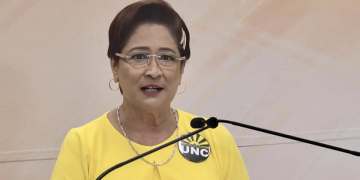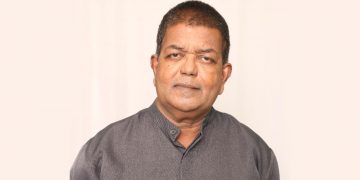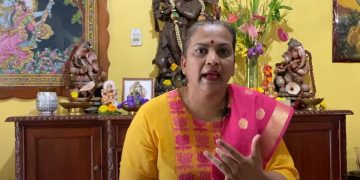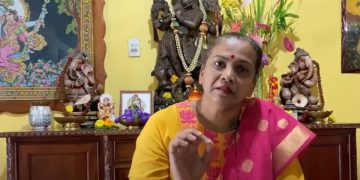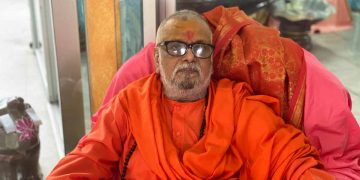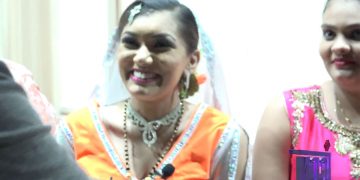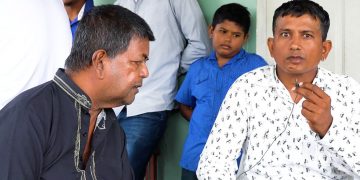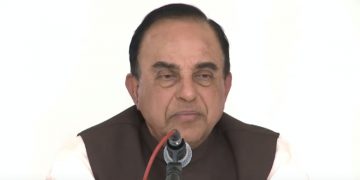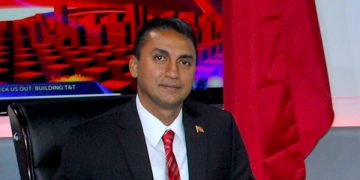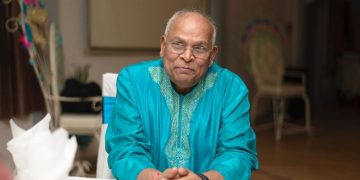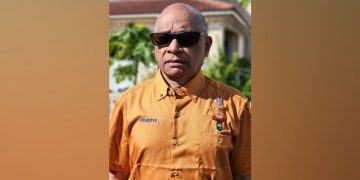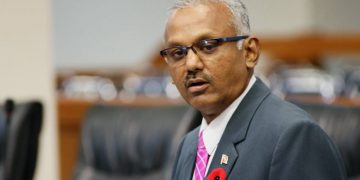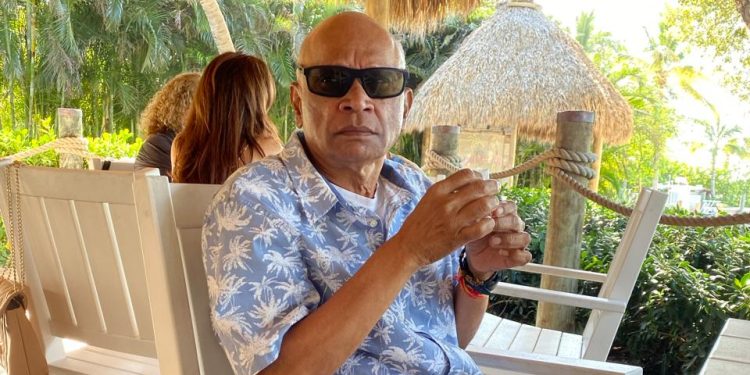INDIAN HISTORY
Let me first delve into some Indian history as this is the origin of the indentured Indians to the Caribbean. North India from where Indians came to the Caribbean are historically considered Aryans in origin. There are two theories as to the origin of the Aryans. Number one is that the Aryans invaded India according to colonial western scholarship. The other more indigenous, that the Aryan originated in India and moved out westwards into Western Asia and further into Europe known as the Out of India Theory. Some Indian leftist communist and socialist scholars subscribe to the Aryan Invasion Theory, thereby giving legitimacy to the Muslim and Christian invaders of India vis-à-vis if the original and early Indian settlers were also invaders then others can loot and invade India too (Romila Thapar and Arundhati Roy).
According to modern Indic academics much of the evidence points to no such thing as an Aryan Invasion and that Sanatan Dharma and the Vedas were the original foundation of Hinduism in India. This religion is native and is endemic to Indian history. Hinduism is therefore autochthonous to the people of India, known by its native name, Bharat. Indians or Bharatiyas have been the historical practitioners of Hinduism and have nurtured it and kept it alive by defending it against many hostile and violent invaders like the Muslims and Christians who forced themselves on Bharat. One must understand that Hindus at times forcefully resisted Muslims and Christians to protect Sanatan Dharma. That is why Hinduism and Judaism are the only two civilizations to have survived despite all the conquerors they faced.
Some have been skeptical whether Hinduism was born out of the womb of Bharat. But archaeological science has proven this to be true by artifacts which have been unearthed after many years including many ancient cities located in the Indus Valley Civilization now referred to by scholars as the Indus-Saraswati Civilization (Bakshi).
In fact, the Harappan civilization of India are quite possible one and the same as Vedic civilization. The archaeological discovery of cities in India much older than even Mohenjo-Daro and Harappa dating back to almost 10 000 B.C. is a significant point of note. This discovery challenges the notion of a sudden influx of Aryans in the region as the Harappan civilization was already established for many years. Linguistic evidence proves that Indo-European languages evolved and radiated outwards from a homeland within India (Koenraad Elst / G.D. Bakshi/ Shrikant Talageri Out of India theory’).
Hindus have been living in Bharat or India and practicing Sanatan Dharma which is a way of life and this has not been disturbed for thousands of years until the invasions of the Abrahamic religions from the 7th century until the independence of Bharat in 1947. The Muslim conquest occurred from the 7th century and they occupied mostly northern India until the 11th century. Muhammad Bin Qasim was the first to invade India in 712 AD and he was the first commander of the Umayyad Caliphate. Qasim invaded the Sindh and Punjab provinces. (Mapsofindia.com -The Arab conquest of Sindh)
The next major invasion was by the British and they conquered the greater part of India. Other European invaders were the French who occupied Pondicherry in East India and the Portuguese who seized Goa on the West coast. The British began as traders in the 17th century and gradually evolved to become full-fledged colonial conquerors under the British East India Company. This ultimately lead to British dominance in the mid-19th century which was known as the British Raj and lasted until 1947 when India achieved independence.
During their time of rule the invaders committed great atrocities on the Hindu population by destabilizing the rich economy, enacting forced conversions by the sword and by implementing heavy taxation on the population known as Jizya tax. It is still debatable which conqueror was the worst of them all. Notable Indian historian and Minister of Parliament Dr. Subramanian Swamy stated that Muslims wreaked havoc by killing millions of Hindus. They also destroyed thousands of Vedic books and demolished of Hindu temples in the tens of thousands.
The British occupation of India saw the imposition of extremely high taxation which placed the once top world economy in shambles by destroying many industries. On the other hand, the British also built railways, roads, bridges and established the telegraph links to aid in the exporting of Indian goods to England but they built such luxuries to serve themselves and their empire not for the benefit of India or Indians. The British also brought western education, technology, their judiciary system and the English language.
Despite British technology in India, it came with a heavy price including suffering, famine, economic exploitation and the destruction of Indian industries given the lack of Indian representation in government and other sectors of the country (Dr Shashi Taroor).
INDIA TO THE NEW WORLD – TRINIDAD.
The rule of these two major conquerors substantially drained the Indian system so that the economy which had a GDP of 27% was reduced to a GDP of 3% which in turn resulted in massive starvation, chaos, and unemployment and which forced Indians to immigrate to Trinidad and the Caribbean. Before the arrival of the British, the Indian world exported was some 25 % to 35% of world GDP which was higher than the collective share of western Europe (17th century economic history of Europe).
When slavery was properly abolished in Trinidad in 1834-1838 the Africans moved to the cities and thus abandoned the grueling work on the plantations. The British then needed a new source of labor especially in the sugar, cocoa and the coffee industries. Almost immediately Indians were brought for the first time to Guyana in 1838. In Trinidad and Tobago, Indian indentureship began in 1845 and continued for almost a century until 1917 when indentureship was terminated. The need for indentured workers sprang from the shortage of labor which was a result of the emancipation of slaves and their large – scale migration from the sugar estates to the cities in 1838. [ British Perceptions of indentured Labor in colonial Trinidad (1838).
Initially Portuguese indentured laborers were imported and then afterwards Chinese servants. However, both were too soft for the punishing work on the plantations and the harsh conditions. Finally, Indians were imported and they proved to be good workers. Many Indians were either forced, tricked, kidnapped even, or wanted to leave India for a better life abroad. They signed a five-year indentureship contract that officially named them as “coolie” laborers.
The African freed slaves were now told by the British that the Indians would be doing the hard field work while the former slaves were to work as trades and craftsmen; some opted to be in the government bureaucracy as policemen, soldiers and civil servants.
CONDITIONS OF INDENTURESHIP 1845-1917.
Throughout the entire span of Indian indentureship in Trinidad (1845 to 1917) the standard of living conditions on the plantations were sub-human. Indians were relegated to the same barracks—or logies— as the former slaves (Vassan Ramracha 2020). The logies measured 10 square feet by 8 feet high. There was little ventilation and cooking was done outside.
Drinking water was sometimes mixed with the poor sanitation drainage of the latrine system. The poor sanitation system led to diseases such as malaria, hookworms, yellow fever and other related parasitic diseases. In spite of these conditions, wages were insufficient so much so that workers were paid 16 to 25 cents per day. (The experience of an Indian servant in Trinidad).
POLITICAL HISTORY OF TRINIDAD AFTER SLAVERY AND INDENTURESHIP
By 1925 the political climate of Trinidad began to change, giving the local Whites, Africans, Portuguese, Chinese and the Indians limited Adult Suffrage representation in the government. As time passed in Trinidad 3 major ethnic groups emerged to be the new rulers as the British were to leave independent Trinidad in 1962. At the same time new political parties were also being formed along the way after independence.
THE WHITE PARTY
The political groups were the White party, that is the Party of Political Progress Groups (POPPG). It first contested national elections in 1950, and it received 3.4% of the vote winning 2 seats.
THE BUTLER PARTY.
Tubal Uriah ‘Buzz’ Butler was born on January 21st 1897 in Georgetown, Grenada and served in the British West Indian Regiment in Egypt in World War I. Butler was arrested and charged with sedition after the strike in 1937 and he was later detained on Nelson Island. In spite of the Butler Party winning the most seats in the Legislative Council, the Colonial Governor appointed Albert Gomes who was the leader of POPPG as the Chief Minister. The British did not appoint Tubal Uriah Butler as chief minister because of his radical and anti-colonial opinion which was considered as extremist at that time.
THE PNM PARTY
The People’s National Movement (PNM) was founded in 1956 by Dr. Eric Williams. He won the general elections in 1956 and held on to power until 1981. In the 1956 Elections there were 129 candidates from 9 political parties which contested for 24 seats in the Legislative Council.
THE INDIAN PARTY OF BHADASE SAGAN MARAJ
The People’s Democratic Party PDP came into existence.
The result was a victory for the People’s National Movement which won 13 of the 24 seats. The two main political parties in the 1956 elections and their leaders were Dr Eric Williams [ PNM] and Bhadase Sagan Maharaj (PDP – and later DLP)
In the 1956 elections one must be mindful that in those elections the PNM party got a slim majority of the elected seats on the Legislative Council, receiving 39.8% of the vote. Butler and the Trinidad Labor Party (TLP) split the other elected seats. The British Governor who controlled 5 appointed seats, filled those appointed seats with men favorable to the PNM.
The question that puzzles most Indians in Trinidad was to why the British threw in their 5 appointed votes to the PNM -Party. (country studies.us). The British colonial Government and the plantation owners were discriminating against Indians in order to keep them working on the plantations and thereby did not view them as future political allies.
The British preferred just a small elite group to be in politics. British authorities favored Afro-Creoles in the limited Civil Service and followed a divide and rule policy between the African and Indian Communities.
Significant Indian involvement in politics took place between 1920 to 1956 and after independence in 1962. The 2nd and 3rd generations of Indo – Trinidadians, especially the educated ones began entering politics like Adrian Cola Rienzi [ labor leader] and Bhadase Sagan Maraj, an Indian Hindu nationalist leader who started organizing political groups with the introduction of Universal Adult Suffrage in 1946. This allowed more Indians to enter national politics. (VS Naipaul and the 1946 elections by Aaron Eastley)
There was a growing perception that the rising of an Indian educated class in the 1956 elections, despite their marginalization by the British— and that they would dominate the Blacks economically and politically.
The genesis of the Indian family inherent in their family structures and Vedic Hindu culture had become a political challenge in 1956 to those who would see it vanish.
ROAD TO INDEPENDENCE
After the 1956 elections and the 1959 Caribbean Federal Elections (United Caribbean Government) the discussions turned to Independence for Trinidad. The road for an independent Trinidad was in the hands of two main ethnic-based individuals.
They were Dr. Eric Williams (Black Race) and Dr. Rudranath Capildeo (Indian Race). These two leaders unitedly signed off for independence that the British were happy to grant. It was a Christian Black man (Dr Williams) and an Indian Hindu man (Dr Capildeo) by which Trinidad became independent with their signatures.
The leaders’ philosophy of the two main races had jointly agreed that an independent Trinidad will be involving both races to chart both the island’s destiny and divert all its resources away from colonial thinking to satisfy all the peoples of Trinidad. Dr Williams with a doctorate in Political Science and with much experience in the political arena had an advantage over Dr. Capildeo who had a doctorate in Physics. The latter was easily outmaneuvered by Dr. Williams.
In the lead up for an independent Trinidad the British rulers wanted two signatures from both leaders of the PNM and DLP. Dr. Williams who had won the 1956 elections was the premier with Dr. Capildeo as the opposition leader. Much debate took place among both leaders before they placed their two signatures for an independent Trinidad.
Dr. Williams had openly preached the ‘Nationalism of No Mother Country’ and that henceforth Trinidad would be the new Mother Land and Dr. Capildeo, influenced by a touch of Socialism, supported Dr Williams and the latter signed off with Dr. Williams for independence without any political safeguard or assurances written in stone for his own Indian race.
This proved to be political suicide for the Indian race in Trinidad for decades and decades that affected mostly Hindus who did not support the PNM. The Indians who were Christians and Muslims voted for the PNM for their two slices of bread without loyalty to their race.
THE POLITICAL PONZI SCHEME!
What is a Ponzi Scheme the Wall Street Way?
The Ponzi scheme is an investment fraud that pays existing investors with funds from new investors. In the case of Trinidad, the Indian/Hindu race who had signed off for independence was marginalized economically and socially in all aspects of life.
In the U.S.A. people had invested in Mr. Bernie Madoff’s plan to get a profit on their investment. Instead, Mr. Madoff had no intention to honestly invest for his shareholders but to outright steal their money which he eventually made off with.
Let’s return to Dr. Capildeo who was representing his Indian race and had joined with Dr. Williams and provided his signature for independence. Dr. Capildeo naively thought he was making a political investment for his people and his country to get a happy return for shared governance and equal resources. However, this was in effect the greatest political Ponzi scheme.
However, Dr. Williams and the PNM had no intentions of involving the DLP in nation-building. Instead, Dr Williams plotted after gaining independence and committed the Greatest Political SIN by keeping power through fraud, gerrymandering geographical boundaries and enlarging the African population by the importation of Blacks from other parts of the Caribbean to build voter’ banks.
Dr. Capildeo and the Indian race did not get any shared political dividends for their contributions for an Independent Trinidad. I respectfully have labelled this as the greatest political Ponzi Scheme of Trinidad.
Why did Dr. Williams and the PNM’s – black race party commit these political sins? After outmaneuvering Dr. Capildeo to sign for Independence with Dr. Williams advocating that ‘we are one nation, one brotherhood’ it became obvious that the latter had no intentions to have any meaningful shared governance.
Dr. Williams and his Black-race-PNM party were operating on the basis that total ownership of Trinidad belonged to Africans by means of their narrative of slavery and that the black race (Negro Man) suffered more than other races and therefore the Blackman must have first entitlement rights to the resources and benefits of Trinidad and Tobago. The Indian man “the Coolie man” was a transient in Trinidad who was just passing through.
The same advocacy of preferential treatment for the Blackman was done by other Caribbean intellectuals like UWI’s Rex Nettleford of Jamaica who had written that the Blackman was the natural inheritor after the British left the Caribbean.
It is interesting to note that in 2011 a recent former Chief Magistrate Julien Holder-Allen of Guyana, publicly proclaimed that according to the contract laws which they signed before coming to the Caribbean, Indian Guyanese and their descendants could be expelled back to India. Holder-Allen was of the opinion that “the contract agreement which Indians signed before coming to the Caribbean, covered the subjects and their descendants. The agreement is still alive today and can be enforced” she said. However, Mr. Roger Ally on 1-14-2011 in the Kaieteur News newspaper debunked the view held by Ms. Holder-Allen. Mr. Ally wrote: “How has the presence of the Indian descendants of Indian laborers transformed Ms. Holder-Allen into an injured party? And even if she was injured, how did she become a successor in the interests of the planters (or their agents) who brought Indians to Guyana?”
The logic of who suffered more was and persistently, is today’s masterpiece, designed and sold to the people of Trinidad. Even Indian scholars are now of the view that the Ponzi scheme masterpiece has today caused the downfall of Indians politically. This logic of who suffered more was supported by Dr. Brinsley Samaroo and Dr. Bridget Brereton of UWI but they never clarified by what yardstick they used to measure suffering.
INDIANS OUT OF POWER AND ITS EFFECTS
The fact that Indians were out of political power for decades (54 years) is because Indians lost their own distinct political narrative to set their agenda to influence what directions Trinidad should adopt and get out of the web of not only colonial but, creolized carnival culture.
Being out of political power has destroyed the Indian way of thinking, for example how the education curriculum is shaped and molded by a Negritude concept empowering the Black way of life. Indians not having the right institutions and the power of media, schools or industries, and the power to control their communities will be erased from Trinidad unless this is changed. Despite the racist hurdles Indians faced, the Vedic culture among Indians is still able to empower them to excel in education and in business, their last remaining saving grace in a politically hostile environment.
SOLUTIONS
Empowering Indians to push back.
The original indentured Indians who came to Trinidad are not the same as the immigrants who came after 1917. Early indentured Indians are Foundation Trinidad Indians (FTI) who built Trinidad from mud to concrete and who spun sugar into gold. Trinidad Foundation Indians descendants must then frame their thinking to set themselves as equal owners of Trinidad to the former slaves.
Indian political and cultural psychology must change drastically so that Indian exceptionalism will and must be understood that we too are builders of Trinidad, and we too have given civility to Trinidad’s stability by our Vedic culture. The Indian mind set must be molded to be also owners of Trinidad. It must be emphasized and understood that the British who originally owned Trinidad allowed the island to be independent by a Christian Blackman – Dr Williams and an Indian Hindu man Dr. Capildeo. The Indian Hindu played an equal, important and vital role in the independence of Trinidad and without it Trinidad and Tobago would have never become independent.
Yet, Dr Williams considered Indians, “a hostile and recalcitrant minority,” only because Indians wanted part ownership of Trinidad and their fair share which they signed for. Indians must learn from their mistakes and must unite to get their stake as they were united in last 28th April’s 2025 elections which made them victorious.
The mistakes of Kamaluddin Mohamed and Dr Winston Mahabir who initially advised Dr. Williams to form a political party in 1956 (at first, even Williams had dismissed the idea) but who went on to form the PNM which won the 1956 elections marked the beginning of the downfall of the Trinidadian Indian man. These 3 PNM fellows had mischievously and derogatorily labelled Indians as the “hookworm race” a mistake that resulted in decades and decades of Indian marginalization.
If political trends continue to hamper Indians from politics it will affect the Indian race in all aspects specifically economically, politically and socially. Then Indians must demand some form of decentralization or separate statehood. Indians must stop behaving like a defeatist submissive race making themselves irrelevant and invisible.
It’s time to push back.
Vassan I. Ramracha
B.S. M.S. Pol Sci/ International Relations.












